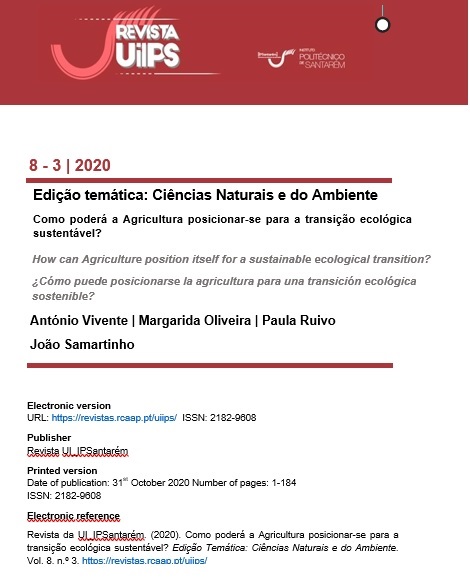Characteristics of greenhouse tomatoes – substrate cultivation vs soil cultivation
DOI:
https://doi.org/10.25746/ruiips.v8.i3.21331Keywords:
Agricultural practices, Crop production, Oeste, Solanum lycopersicum L., TomatInovAbstract
The Portuguese Oeste region is responsible for the production of approximately 100,000 tons of tomatoes per year in greenhouse. The importance of the culture for the region is undeniable and the investment in the sector is essential. Soilless systems have been gaining increasing importance in a crop that is still predominantly conducted in soil, due to its positive results in controlling production imponderables such as soil diseases and problems associated with salinity. In order to evaluate the possible advantage for the regions tomato producers to change from a soil producing system to a non-soil producing system, a comparative study of fruit quality associated with two production systems was conducted: soilless (A) and in soil (S) in Oeste greenhouses. Most of the analysed parameters did not present significant differences regarding the production method, however some differences were detected in important parameters, such as maturation index and total soluble solids that were higher in A, while the fruits of Greenhouse S showed color coordinates that reveal higher luminosity, more yellowish shades and stronger and brighter color.
Downloads
Published
How to Cite
Issue
Section
License
Authors publishing in this journal agree to the following terms:
Authors retain copyright and grant the journal the right of first publication, with the article simultaneously licensed under the Creative Commons Attribution License that allows sharing of the work with acknowledgement of authorship and initial publication in this journal.
Authors are permitted to enter into additional contracts separately for non-exclusive distribution of the version of the article published in this journal (e.g., publish in an institutional repository or as a book chapter), with acknowledgment of authorship and initial publication in this journal.
Authors have permission and are encouraged to publish and distribute their work online (e.g., in institutional repositories or on their personal webpage) at any point before or during the editorial process, as this may generate productive changes, as well as increase the impact and citation of the published work.



